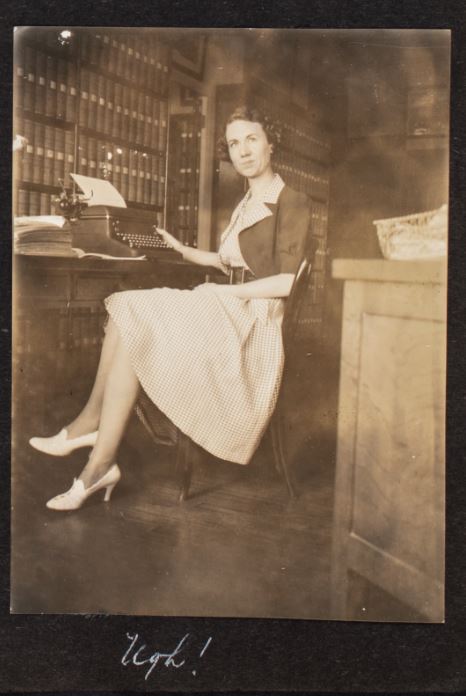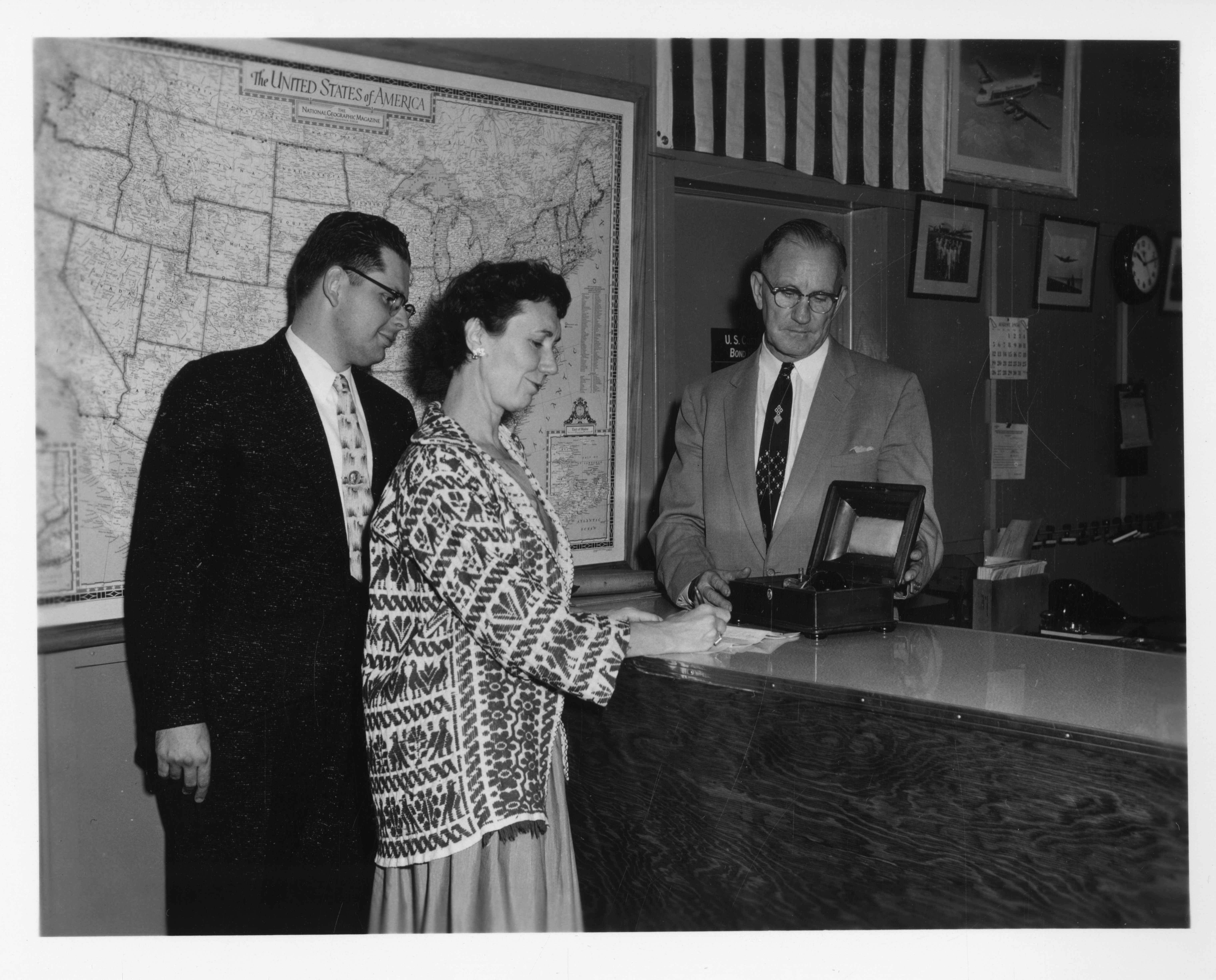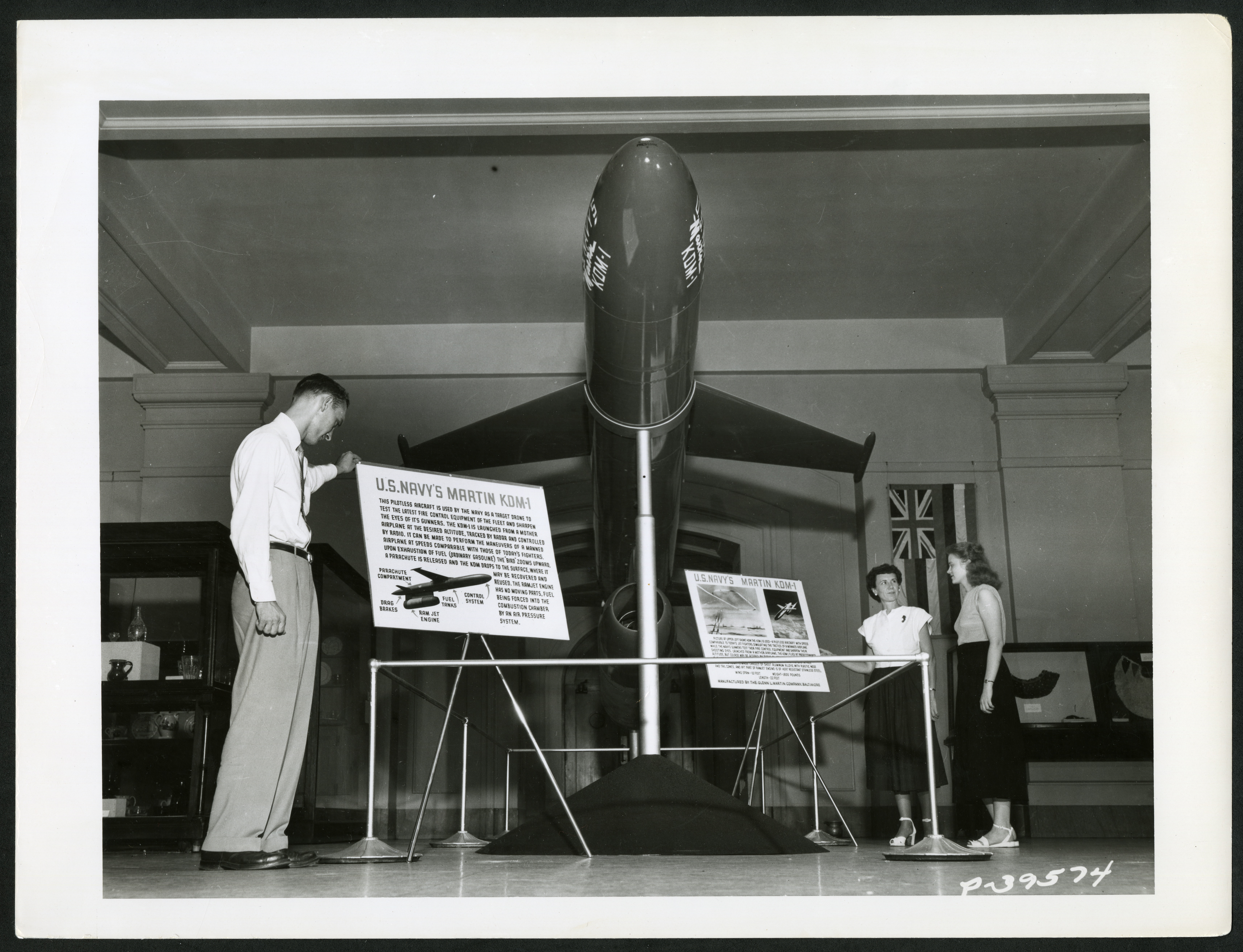Helena M. Weiss

Smithsonian Institution Archives Oral History Collection, SIA009587
As Smithsonian’s registrar for more than twenty years, Helena M. Weiss (1909-2004) had the extraordinary responsibility of recording and facilitating everything that came into and out of the United States National Museum (USNM). From bug specimens to the Hope Diamond, Weiss was in charge of making sure every object was properly recorded, shipped, loaned, and exchanged. She responded to the scores of letters that flowed into the Smithsonian on a regular basis, and prepared scientists for their field work expeditions all across the globe. Her work was vital to the growth of the Smithsonian, and she was one of the Institution’s first women to attain a management position.
Delving into Weiss’ oral history interviews offers unique insight into the inner-workings of the Smithsonian from the 1930s to the 1970s. Learn about how the Smithsonian acquired some of its most prized specimens, like the Wright brother’s airplane and the Fénykövi elephant. Read stories about some of the Smithsonian’s most interesting curators and Secretaries. Most importantly, discover what it was like to be a pioneering twentieth-century woman of the Smithsonian.
“One big family”
Session 1-2 00:07:02-00:07:44
In those days, I feel like the whole Smithsonian was like one big family, in a way, as far as the top staff was concerned, because they all had to work together rather closely, maybe because they were not spread out as much as today and they did not have the stenographic help. The curators did their own work and had to work with anybody that could help them with their collections. They didn't have museum aides, in the beginning, in that side of things. So everybody got more acquainted, well, at least with Mr. Bryant's office.
“Poisonous snakes”
Session 4-2 00:00:49-00:02:12
WEISS: We had another… you want one more story?
HENSON: Absolutely!
WEISS: We had another interesting one that I remember. That was an air shipment of snakes that were coming from South America… no, they were coming from the Middle East, someplace… and they were poisonous snakes. They were live, and the exhibits people wanted them live because they wanted to study their movements for exhibit purpose. They were going to freeze-dry these snakes. Did you ever hear of that, freeze-dry method?
HENSON: A little bit.
WEISS: When they arrived at the airport, I got a call from the airline, and they said they had this crate, and it was marked "POISONOUS SNAKES." And I said yes, I knew about it.
They said, "Will you come out and get them right away?" They didn't want to keep them. See, they had to come through customs, and the customs people didn't want to get near them either.
I said, "Well, where are they?"
They said, "They're over in the farthest corner of the hangar, and nobody is going near the place!" [LAUGHTER]
“Last-minute field equipment in Panama”
Session 5-2 00:29:06-00:29:47
I went down with [Annie Beatrice Thielen] Bea Wetmore. I saw that Dr. Wetmore's equipment went out before he left, and he flew down, because he had some things he had to do in advance to get ready for work there. Bea and I took a freighter down, and Dr. Wetmore met us at the pier with the jeep, and we took off in the jeep from the dock. [LAUGHTER] Then I went with them… he wanted me to have the experience as an observer with him to get some last-minute field equipment in Panama.
“It was not a large staff.”
Session 6-1 00:24:30-00:25:08
When I left here, I think I had a staff of thirty-six [thirty-one]. That included all of the mail messengers who served all the buildings on the Mall, mostly clerical and mail messengers. So it was not a large staff, considering what we did. We had our correspondence and shipping clerks, the whole mail system for the Smithsonian, and the files, accessions, the immigration work, passport and visa work, travel papers… that wasn't a large staff.
“I wanted to slip out of the Smithsonian.”
Session 8-2 00:31:54-33:01
WEISS: Oh, my! I wanted to slip out of the Smithsonian with no [fanfare]. I didn't even want any retirement party, and I got. . . . Fortunately, it being at the end of the year, it didn't have to be a big affair, but they did insist they wanted to have something. And, so, quite a few people were away because it was during the Christmas holiday. But they did have it over in the Castle, and it was very, very nice. I'm glad now that. . .
HENSON: That you did.
WEISS: . . .they did have it, because it was done very low-key, and in very good taste. I'm sure Frank Taylor had a lot to do with seeing that it was that way.
HENSON: Done just right.
WEISS: And what was the most exciting thing was that there were three Secretaries. Mr. Ripley didn't get there, he was the present… but Jim Bradley, Mr. Bradley represented him. And there was Dr. [Charles Greeley] Abbot, and Dr. [Alexander] Wetmore, and Dr. [Leonard] Carmichael.
HENSON: All there?
WEISS: They were all there.
Want to hear more stories about Helena M. Weiss? You can now read her full interviews on our website.
- Helena M. Weiss Oral History Interviews, 1987, Record Unit 9587, Smithsonian Institution Archives
And we’ve written about Weiss a few times on our blog, The Bigger Picture.
- “‘Dear Sir’: Letters to the Smithsonian, 1948-1971,” by Emily Bierman, The Bigger Picture, Smithsonian Institution Archives
- “The whole Smithsonian was like one big family…” by Pamela M. Henson, The Bigger Picture, Smithsonian Institution Archives
- “Birthdays at the Smithsonian,” The Bigger Picture, Smithsonian Institution Archives
- “Volunteer Appreciation: Kathy Boi,” by Lisa Fthenakis, The Bigger Picture, Smithsonian Institution Archives
- “Wonderful Women Wednesday: Helena Weiss,” by Effie Kapsalis, The Bigger Picture, Smithsonian Institution Archives
And even more references in some of our other records.
- “Album 1, Panama 1962: Volume 1,” Record Unit 7006, Smithsonian Institution Archives
- Venezuela, 1954: To Take Part in a Ornithological Expedition Sponsored by William H. Phelps, Record Unit 7006, Smithsonian Institution Archives
- Accession Records, 1834-1958, with accretions to 1976, Record Series 316, Smithsonian Institution Archives
- Shipment Records, 1850-1969, Record Series 324, Smithsonian Institution Archives
Want to dive into even more, scroll through the finding aids to Weiss’ personal papers.
- Helena M. Weiss Papers, 1908-1993, Accession 12-184, Smithsonian Institution Archives
- Helena M. Weiss Papers, 1923-2001, Accession 05-112, Smithsonian Institution Archives









